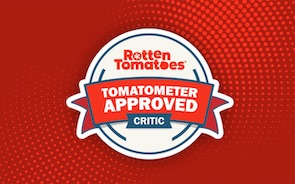{googleAds}
<div style="float:left">
<script type="text/javascript"><!--
google_ad_client = "pub-9764823118029583";
/* 125x125, created 12/10/07 */
google_ad_slot = "8167036710";
google_ad_width = 125;
google_ad_height = 125;
//-->
</script>
<script type="text/javascript"
src="http://pagead2.googlesyndication.com/pagead/show_ads.js">
</script></div>{/googleAds}
The promise that Isaac Asimov's name brings to a sci-fi movie is about as credible as it gets. Asimov was the crème de la crème of the peculiar brand of sci-fi that built itself around the concept of increasing human wastes and excesses. For guys like Asimov, sci-fi was a means of shouting to the rest of the human race, â"Watch out for that cliff!"
Since I have not read any of the I, Robot stories (or much other 50's science fiction, for that matter), I was free from the constraints of that era of the genre. Too bad most people who heard about this movie aren't so lucky. I mean, it seems like some of these people would rather see a film of Asimov's animated corpse rising up from the grave and reading from the book, than have his work plundered and used as a stepping stool for greater moments.
If director Alex Proyas were not at the helm, this may not have been as fun and as dark as it is. Had Spooner been played by Alec Baldwin rather than Will Smith, we might have had a snore-fest. Both play to their strengths using a script that is surprisingly accommodating to both. The result is a pretty well-crafted piece of sci-fi that carries its own weight for story and visuals.
Will Smith is Detective Spooner, a man with a less-than healthy encounter with a robot, which has given him a rabid anti-robotism that seems almost comical in its role reversal. He is called to the scene of the apparent jump suicide of Dr. Alfred Lanning (James Cromwell... who knew he invented both the warp drive and modern robotics?) from the top of the US Robotics fourteen billion story building. Spooner smells a rat, uncovering a rogue NS-5, the new model robot that USR is busy trying to roll out to homes across the world (one wonders where USR's competition is, but as the market principles of this 2034 world are not mentioned, one can only assume monopolies are a welcome aspect to this cleaner, but somehow darker world).
Spooner discovers that Lanning has left clues about his death that lead him to the truth about the robots. The NS-5 protests its innocence, and USR's cagey President Robertson (Bruce Greenwood) insists the new models are perfectly 3-Laws Safe (one of the few things to arrive intact from Asimov's work). Naturally, not all is well in Robotland, but thankfully Smith is a capable cop with some robotic secrets of his own; the climax is an exciting and well-rendered result of a storyline that has, we realize, been building to the point of high tension. When the action arrives, it is, for the most part, unrelenting.
I, Robot contains some interesting, if somewhat undeveloped, themes that speak to some of history's more prominent methods of social upheaval. Spooner's prejudice against robots is seen as outdated, but it is tolerated; the motivation for Spooner's human racism against non-living entities is weak, but his dislike for robots is undeniable and plays well with the question of the robots' â"humanity". Spooner tells Dr. Calvin (Bridget Moynahan) that the nice thing about humans is once you look past the skin colour, you know what's underneath, implying that with robots, there is no heart, no emotion.
Screenwriters Jeff Vintar and Akiva Goldsmith seem interested in the technology theory of â"ghost in the machine", the idea that random instances of code can evolve to the point of self-awareness. The central social question for this movie is, â"How will you treat your technology? With disdain and hatred, or with love and respect?"
Proyas imbues each scene with a fusion of creepy neo-technical cleanliness and rugged humanity, creating an understated conflict in the midst of apparent calm. The production design for both sets and robots help the illusion flow into action. Thus we are presented with a good mixture of moody technological buildings that eventually become a backdrop for the essential realism of the streets. Inhabited by real humans and robots, the result is an uncanny and frighteningly realistic portrayal of a complete symbiosis of man and machine.
For 50's sci-fi sensibilities, I, Robot will not please. However, it succeeds in crafting a fascinating, dark world in which even the most jaded sci-fi fan can lose herself. Chalk up another tick mark in the winner's category for Alex Proyas and Akiva Goldsmith.
DVD Details:
Screen formats: Widescreen 2.35:1
Subtitles: English; Spanish.
Language and Sound: English: DTS 5.1 Surround; English: Dolby Digital 5.1; Spanish: Dolby Digital 5.1; French: Dolby Digital 5.1
Other Features: Color; interactive menus; scene access; audio commentary; making-of featurette; trailer.
* Commentaries:
o With director Alex Proyas
o With screenwriter Akiva Goldsman
* Featurettes:
o Making of I, Robot
o Mr. and Mrs. Smith, Robots, and Elektra
o Text and photo Gallery
Region: 1
Packaging: Snap Case
{pgomakase}





























